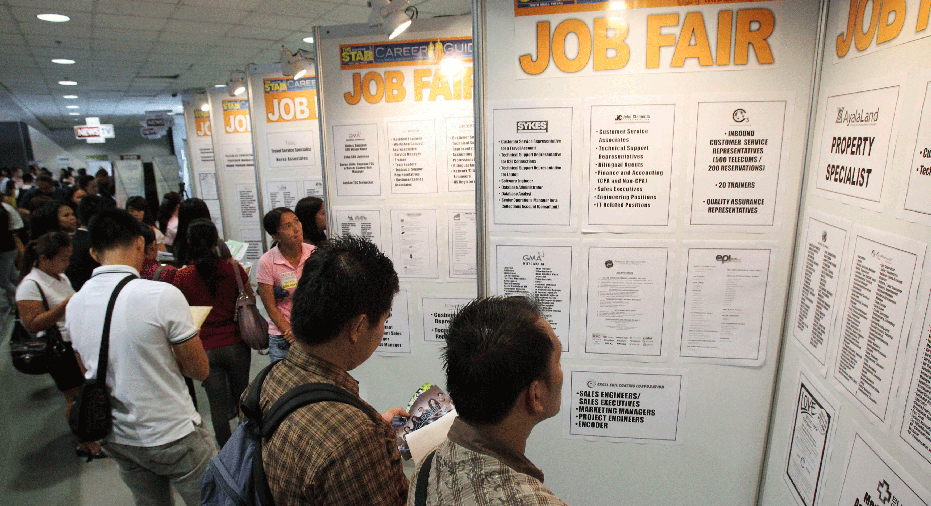U.S. Jobless Rate Hits Lowest Level Since January '09

The unemployment rate fell to 7.8% in September, an unexpectedly sharp drop after months of lackluster jobs data. The decline was attributed to an increase in self-employed workers.
The government said 114,000 jobs were added to the economy, slightly more than economists had predicted.
The report will undoubtedly have wide political ramifications for the upcoming presidential election, in particular for the incumbent candidate President Barack Obama. The 7.8% unemployment rate is the same figures as when Obama took office in January 2009.
Under the Obama administration, the jobless rate hit a high of 10% in October 2009.
The November 6 election, which pits Obama against Republican candidate Mitt Romney, is laser-focused on the U.S. economy and its long, slow recovery from the financial crisis of 2008.
With a poor showing Wednesday night in the first presidential debate, Obama, who was leading in many polls throughout September, would certainly have seen his popularity and job effectiveness numbers drop if voters had seen little change in the all-important unemployment rate.
Beyond the headline numbers, other positive signs included upward revisions for August and July payroll numbers: August payrolls rose 142,000 not 96,000 as reported earlier, and the July number was 181,000 rather than 141,000.
Private companies added 104,000 jobs, the lion’s share of the new jobs created. The sectors seeing gains included health care, transportation and warehousing. The manufacturing sector lost 16,000. Government jobs, meanwhile, rose by 10,000 positions, reversing a trend in the other direction.
The decline in the unemployment rate will surely be portrayed by the president as a sign that the economy is recovering, albeit slowly.
Stock market futures pointed higher after the release of the government report from the U.S. Labor Department.
A contributing factor to the drop in the unemployment rate was a survey of households which showed 873,000 job gains last month, the most since June 1983. Those numbers include large number of workers who describe themselves as self-employed.
After a summer of lackluster economic data, much of domestic fiscal policy and virtually the entire presidential election has been focused on U.S. labor markets and job creation. In September the unemployment rate fell to 8.1% from 8.3%, but only because 368,000 workers dropped out of the workforce.
The Federal Reserve got in the act last month, announcing that its fiscal policy is now aimed primarily at creating jobs.
The central bank introduced a third round of stimulus, a program of quantitative easing in which the Fed will purchase $40 billion in mortgage backed securities in an effort to push mortgage rates even lower. The strategy is designed to stimulate the long-dormant housing market, whose impact is felt widely across the economic landscape, not least in creating construction, retail and financial services jobs.
Some analysts who parsed through the numbers Friday saw signs of encouragement.
“While many now look at unemployment rate dynamics through the prism of the participation rate, the drop in the unemployment rate in September appears to be for all positive reasons. The number of employed people rose in the month by the most in nearly ten years while the number of unemployed persons fell strongly for the second month in a row. These developments are exactly what the Federal Reserve is looking for in terms of a “better” labor market,” said Dan Greenhaus, chief global strategist at BTIG.
Others viewed the numbers with skepticism given the stagnant second quarter GDP of 1.3%.
"There are big question marks, therefore, as to whether this pace of job creation can persist, especially given mixed signals from the leading indicators about the trajectory of US economic growth in the second half of the year,” said Chris Williams, chief economist at research firm Markit.



















